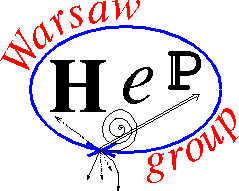SEMINARIUM FIZYKI WIELKICH ENERGII
Dnia 2 lutego (piątek) o godzinie 10:15, w sali B2.38 odbędzie się seminarium, na którym zostanie wygłoszony referat pt.:
„Image-guided FLASH Proton Therapy”
Referuje: Karol Lang, University of Texas at Austin
Image-guidance and dosimetry of the in-vivo proton range verification is one of the most underinvested aspects of radiation cancer treatment. The scarcity of sensitive instruments and treatment protocols for precision monitoring of effects of beam radiation leaves much room for improvement. This is despite that such measurements may dramatically enhance the treatment accuracy and lower the post-exposure toxicity, improving the entire outcome of cancer therapy.
In this talk, we will discuss designing and building of an in-beam time-of-flight positron-emission-tomography (PET) scanner to be tested in pre-clinical studies at Proton Therapy Center of MD Anderson Cancer Center in Houston. We will also discuss selected results of recent experiments with FLASH proton beam irradiations of phantoms and other related ideas towards improving and expanding the use of PET detectors, including the total body imaging. This endeavor has been made possible by the support of the U. of Texas – Portugal program at the University of Texas at Austin.
Serdecznie zapraszamy
dr hab. Katarzyna Grzelak
prof. dr hab. Aleksander Filip Żarnecki

